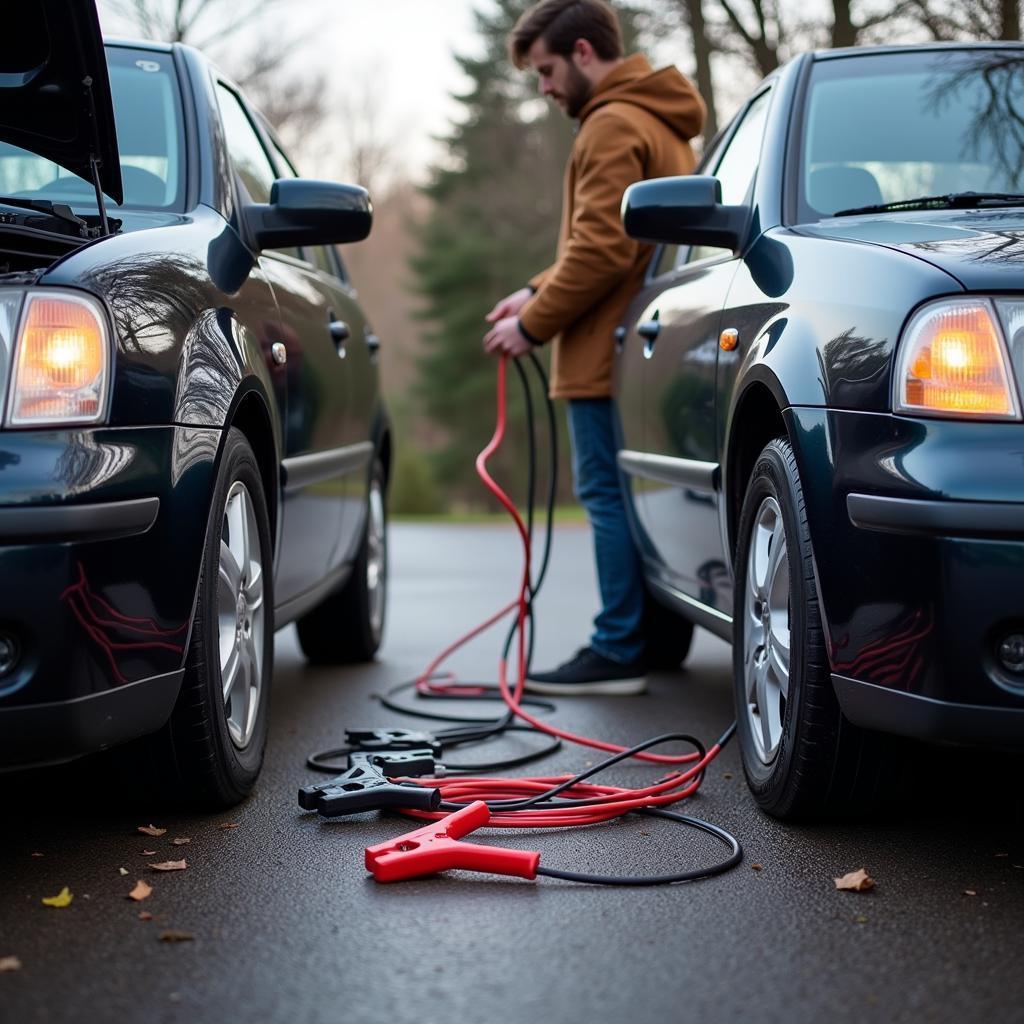A bad battery can be a major headache, leaving you stranded and frustrated. Whether you’re dealing with a car battery, key fob battery, or any other type of automotive battery, this guide provides practical solutions, expert advice, and remote diagnostic tips to help you get back on the road.
Signs of a Bad Battery
Identifying a bad battery early can save you time, money, and hassle. Here are some common indicators that your battery might be failing:
- Slow engine crank: The engine turns over slowly when you try to start the car.
- Dim headlights: Headlights appear dimmer than usual, especially when the engine is idling.
- Clicking sound when turning the key: You hear a rapid clicking sound when you attempt to start the car.
- Electrical malfunctions: The radio, power windows, or other electrical components don’t work properly.
- Warning lights on the dashboard: The check engine light or battery light illuminates.
- Swollen battery case: The battery case appears bloated or deformed.
- Rotten egg smell: A sulfurous odor emanating from the battery indicates a leak.
If you notice any of these signs, it’s essential to address the issue promptly. Check out our guide on the 2022 hyundai elantra key fob battery if you suspect your key fob is the culprit.
Troubleshooting a Bad Car Battery
Before replacing your battery, try these troubleshooting steps:
- Check the battery terminals: Ensure the terminals are clean and tightly connected. Corrosion can interfere with the electrical connection.
- Test the battery voltage: Use a multimeter to check the battery’s voltage. A fully charged battery should read around 12.6 volts.
- Check the alternator: The alternator recharges the battery while the engine is running. A faulty alternator can cause a dead battery.
- Inspect the battery cables: Look for any damage or fraying in the battery cables.
 Jump Starting a Car with Jumper Cables
Jump Starting a Car with Jumper Cables
Remote Diagnostics and Programming
Modern vehicles often require specialized software for diagnosis and repair. Remote diagnostic services allow technicians to access your vehicle’s computer system remotely and identify the root cause of the problem. This can be invaluable in diagnosing complex electrical issues, including those related to a bad battery. If you’re having trouble with your Hyundai Elantra’s key fob, you might find this article about the 2017 hyundai elantra key fob battery helpful.
How Does Remote Diagnostics Work?
Remote diagnostics utilizes a device that plugs into your vehicle’s diagnostic port. This device transmits data to a technician who can then analyze the information and identify any faults. This process can save you time and money by avoiding unnecessary trips to the mechanic. For those experiencing issues with their Ioniq 5, our guide on the ioniq 5 12v battery dead might be just what you need.
“Remote diagnostics is revolutionizing the automotive repair industry,” says John Smith, Automotive Electrical Engineer at CarDiagTech. “It allows us to quickly and accurately diagnose problems, even for vehicles located in remote areas.”
Preventing Bad Battery Issues
Here are some tips to extend the life of your battery and avoid future problems:
- Avoid short trips: Short trips don’t allow the alternator enough time to fully recharge the battery.
- Turn off all electrical accessories before turning off the engine: Leaving lights or the radio on can drain the battery.
- Keep the battery clean: Regularly clean the battery terminals to prevent corrosion.
- Have your battery tested regularly: A professional can test your battery’s health and identify potential problems.
“Regular maintenance is key to preventing battery problems,” advises Sarah Jones, Lead Technician at CARDIAGTECH. “Just like any other component of your car, your battery needs attention to ensure it functions properly.” For those with older Hyundai Elantras, check out this resource on the 2013 hyundai elantra key fob. You can also find more general information in our guide about hyundai elantra key fob battery.
Conclusion
A bad battery can be a significant inconvenience, but by understanding the signs, troubleshooting steps, and preventative measures, you can minimize the impact. Remember, remote diagnostic services and expert advice are readily available to help you get back on the road quickly and safely. Don’t let a bad battery ruin your day—take action and address the issue proactively.

